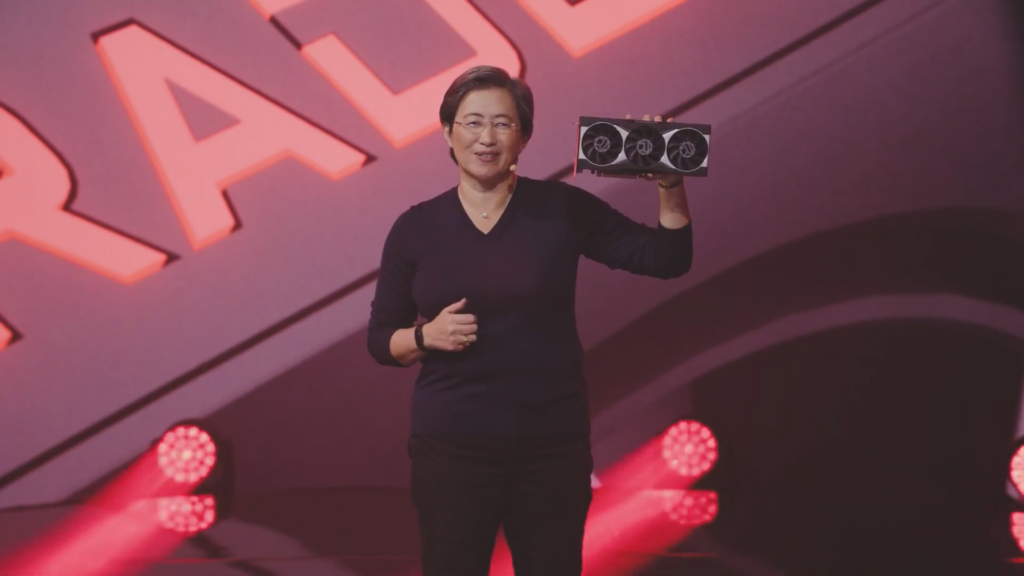AMD Big Navi (RX 6000): Release date, price, specs and performance

The AMD Big Navi (aka RX 6000) graphics cards have finally arrived, with the Radeon RX 6800 XT and RX 6800 both available to buy right now.
The RX 6900 XT is still a few weeks away from release, but the ultra-powerful AMD card looks to be worth the wait if the specs are anything to go by.
The new AMD Big Navi graphics cards provide the power for 4K resolution and support for DirectX RayTracing. You can check out our AMD Radeon RX 6800 review right now, although you’ll have to wait a little while longer for our reviews of the other cards.
Keep scrolling down for more details on the rest of the AMD Big Navi line-up.
Related: Best Graphics Cards 2020
AMD Big Navi (RX 6000) release date – When will AMD’s next-gen GPU launch?
The Radeon RX 6800 and RX 6800 XT graphics cards are both available to buy now. However, stock seems to be very limited so it’s proving very difficult to order one of the new graphics cards.
Check out our ‘Where to buy the AMD Radeon RX 6800 graphics card‘ guide for the latest updates on stock availability.
The RX 6900 XT will launch slightly later on 8th December 2020.
AMD Big Navi (RX 6000) price – How much doAMD’s GPU cost?
The RX 6800 costs £529/$579, the RX 6800 XT is priced at £599/$649 and the juggernaut RX 6900 will set you back $999. UK prices are yet to be confirmed for the latter of the three.
Take note though, the prices are for AMD’s own founder edition cards. Third-party models are generally far more expensive, while offering increased clock speeds.
Related: Nvidia Ampere

AMD Big Navi (RX 6000) specs
AMD Big Navi graphics cards features RDNA 2 architecture, which sees a 50% performance-per-watt boost on the previous generation. This results in a noticeably improved performance for the new graphics cards.
AMD has provided the below specs table which provides an in-depth look at the trio of Big Navi graphics cards.
|
|
Compute Units |
GDDR6 |
Game Clock (MHz) |
Boost Clock (MHZ) |
Memory Interface |
Infinity Cache |
|
AMD Radeon RX 6900 XT |
80 |
16GB |
2015 |
Up to 2250 |
256 bit |
128 MB |
|
AMD Radeon RX 6800 XT |
72 |
16GB |
2015 |
Up to 2250 |
256 bit |
128 MB |
|
AMD Radeon RX 6800 |
60 |
16GB |
1815 |
Up to 2105 |
256 bit |
128 MB |
There’s a decent chance third-party models will crank up the clock speeds even higher, although expect them to cost significantly more than AMD’s base graphics cards.
Interestingly, every one of the new graphics cards features 16GB GDDR6 memory which should be very speedy. Nvidia made the jump to GRR6X memory for its RTX 3000 cards so it will be interesting to see how they compare in this regard.
These specs put AMD’s graphics cards in an excellent position in its bid to compete with Nvidia’s RTX 3000 graphics cards, especially at the competitive price points.
Related: Intel vs AMD
AMD Big Navi (RX 6000) performance
AMD’s three new graphics cards pack some seriously powerful specs, but have vastly different performance targets.
The AMD Radeon RX 6800 targets a super-high Quad HD performance, but is also perfectly competent at 4K gaming at 60fps. Our own 4K tests saw the new graphics card hit 119fps in Doom Eternal, 52fps in Borderlands 3 and 98fps in Battlefield V. These results are very similar to what the Nvidia RTX 3070 is capable of.
Meanwhile, AMD claims the RX 6800 XT offers a more competent 4K performance, hitting 138fps in Doom Eternal, 113fps in Battlefield V and 91fps for Call of Duty: Modern Warfare. We’ve been unable to test this for ourselves at this stage though, as we’re still waiting for review samples.
And then we have the incredibly powerful RX 6900 XT, which blasts through all AAA games in 4K at astonishingly high frame rates. AMD suggests the RX 6900 XT is capable of achieving 169fps in Doom Eternal, 122fps for Battlefield 5 and 102fps in Call of Duty: Modern Warfare. There’s no doubt that this is the most powerful AMD graphics card that you can buy.

Of course, all three graphics card also support DirectX RayTracing, which allows for more realistic lighting and reflection effects. If Nvidia’s RTX cards are anything to go by, ray tracing will likely cause a big frame rate loss when activated, but AMD didn’t offer an information on this.
AMD unfortunately won’t have a DLSS equivalent at launch, which means the new Radeon cards can’t offset the performance loss caused by ray tracing like the Nvidia RTX graphics cards can. Fortunately, AMD has reportedly told the Verge that a new super sampling feature is in testing which will increase the performance for ray tracing. It’s unknown how long we’ll have to wait for such a feature, and so Nvidia’s RTX cards likely remain the best option if ray tracing is a priority.
Related: AMD Ryzen 5000
AMD Big Navi (RX 6000) design
The AMD Big Navi graphics cards all feature a triple-fan design which look fairly similar to previous Nvidia GeForce graphics cards.

The graphics card use a a 2 x 8-pin PCIe power connection, and so won’t be following Nvidia’s lead in using a new 12-pin PCIe power connector. The new cards also feature 2x DisplayPort, 1x HDMI and 1x USB-C which can be used for hooking up virtual reality headsets.
Keep this page bookmarked for future news and updates on the AMD Big Navi graphics cards.


